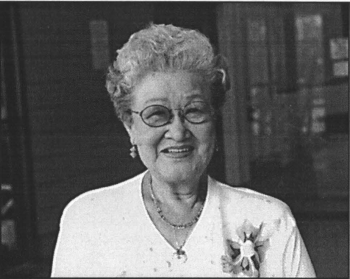Evelyn Lyn Kagawa

Tsunamis Remembered: Oral Histories of Survivors and Observers in Hawai‘i
Life history interviews with individuals who witnessed and survived tsunamis-particularly the 1946 and 1960 disasters on the Big Island of Hawai'i. Thirty individuals-mostly residents of Hilo and Laupahoehoe-recall their experiences before; during, and after the 1946 and 1960 tsunamis which were arguably the most destructive natural disasters in modem Hawaiian history.
Evelyn Lyn Miyazaki Kagawa, nisei, was born June 22, 1922 in Tacoma, Washington. Her parents, Carl Shintaro Miyazaki and Matsuko Matsukawa Miyazaki immigrated to America from Kumamoto and Ehime prefectures, respectively. Kagawa, the second of four children, was raised and educated in Tacoma, graduating from Stadium High School. She was attending the College of Puget Sound when World War II broke out. Carl Miyazaki, a leader in the local Japanese community, was picked up by the FBI and interned as an enemy alien at Santa Fe, New Mexico. Kagawa and her family, along with other Japanese Americans of the area, were taken first to an assembly center in Pinedale, California, then eventually to Tule Lake internment camp, where they were conimed for twenty months. At Tule Lake, she met Hideo Kagawa, a Hilo native who was interned while a student at Sacramento City College. They eventually relocated to Chicago, where Lyn worked as a nurse's aide in the University of Chicago School of Medicine. After they were married in 1946, Hideo was drafted into the U.S. Army. Lyn went to Minneapolis, Minnesota to live with her parents, who had relocated there after the war ended. In 1951, Lyn and Hideo moved to Hilo to live. Hideo's family owned S. Hata Shoten, Ltd., a general merchandise store specializing in dry goods on Kamehameha Avenue in downtown Hilo. Lyn worked in the store, eventually becoming manager with her husband after her mother-in-law retired in the 1960s. Hideo Kagawa died in 1972. Although the S. Hata Shoten, Ltd. building, which was made of concrete, survived the 1960 tsunami, all the store's merchandise and other contents were washed away. They were able to salvage some of the merchandise by washing them in a stream and drying them in a park. Since closing the business in 1989, Kagawa lives in Hilo with one of her three children.
Scope and Content Note
A Mainland-born woman talks about her parents and their background. She describes December 7, 1941, when her father was picked up by the FBI, and his internment at Lordsburg, New Mexico; her family's internment at Tule Lake, California; and meeting her future husband, a Hawaii-born nisei, in camp. She recalls her in-laws, owners of the S. Hata business, and describes their fabric store. The 1960 tidal wave caught her family in the S. Hata concrete building. While she and her family survived, the merchandise was washed away. She explains how they rebuilt the business.
Program Note:
This interview is part of the Center for Oral History's project Tsunamis Remembered: Oral Histories of Survivors and Observers in Hawai‘i. Interviews from this project are available in the Center's ScholarSpace open access repository.
The Center for Oral History (COH), in the Department of Ethnic Studies at the University of Hawaiʻi at Mānoa, collects, documents, preserves and highlights the recollections of Native Hawaiians and the multi-ethnic people of Hawaiʻi. It produces oral histories and interpretive historical materials about lifeways, key historic events, social movements and Hawaiʻi’s role in the globalizing world, for the widest possible use.
Please Note: The oral histories in this collection are protected by copyright and have been created for educational, research and personal use as described by the Fair Use Doctrine in the U.S. Copyright law. Please reach out Voices@noaa.gov to let us know how these interviews are being used in your research, project, exhibit, etc. The Voices staff can help provide other useful resources related to your inquiry.
The NOAA mission is to understand and predict changes in climate, weather, oceans, and coasts, to share that knowledge and information with others, and to conserve and manage coastal and marine ecosystems and resources. The Voices Oral History Archives offers public access to a wide range of accounts, including historical materials that are products of their particular times, and may contain offensive language or negative stereotypes.
Voices Oral History Archives does not verify the accuracy of materials submitted to us. The opinions expressed in the interviews are those of the interviewee only. The interviews here have been made available to the public only after the interviewer has confirmed that they have obtained consent.
